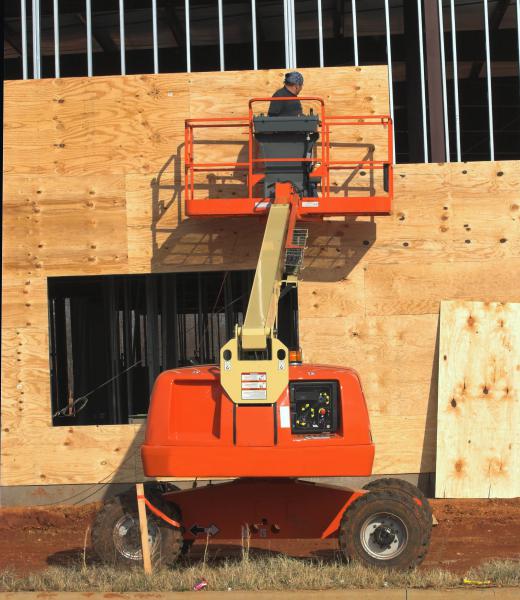Boom lifts are devices that include a platform that can be raised and lowered to a number of different heights. There are actually several specialized types of this device. One common variation is the aerial lift. These are often used at ski lodges to transport people who are uncomfortable using a ski lift to get to a slope. Rather than stretching out across a long expanse of open country, aerial lifts work in a manner that is similar to an elevator. Skiers are transport up gradually, stopping at stations along the way until the reach the top of the slope. Aerial lifts are also often used in construction as well, allowing workers to safely move up and down the sides of multi-level building construction sites.
Another example of boom lifts is the scissor lift. Often employed by utility companies, scissor lifts are ideal ways of allowing workers to check on and repair cables and wires that are attached to poles. These get their name from the scissor action associated with raising the enclosed platform to the proper height, involving two sections that slowly move in an arc to the level required to reach the cables safely. Power companies, cable companies, and telephone companies have employed the use of this sort of boom lift for decades.

A third example is the knuckle boom lift. Made for use on rough terrain and in situations where the ability to reverse the direction during the course of a project, the knuckle boom can fit into tight spots where a scissor lift will not fit. Whether working between two walls in close proximity or between machines in a large manufacturing plant, the knuckle boom still features a standard platform with rails for protection.

Determining which of the various types of boom lifts are required for a particular application requires asking questions about the nature of the work to be accomplished. Will the job require working in tight places? Will the lift be placed on level ground or on rough terrain? Is the ability to reverse the direction during the task necessary? Since different boom lifts are manufactured to handle different types of work, understanding the usual jobs to be performed will help ensure selection of the right boom lifts to cover just about any occasion.

